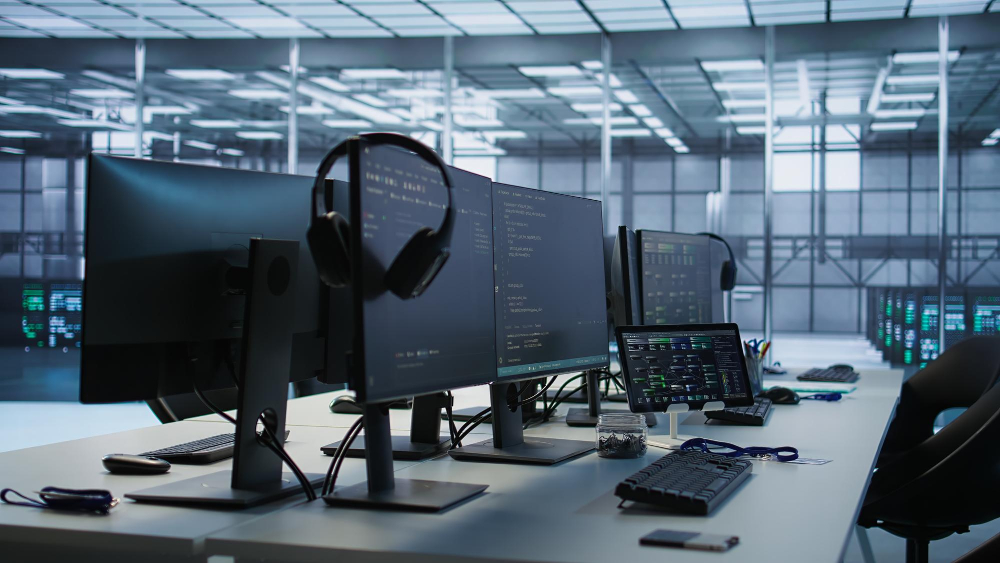IT Asset Management

In today’s fast-paced digital landscape, businesses rely heavily on technology to drive operations, innovation, and growth. However, managing the vast array of IT assets—ranging from hardware and software to cloud services and mobile devices—can be a daunting task. IT asset management (ITAM) offers a structured approach to tracking, maintaining, and optimizing these critical resources throughout their lifecycle. By implementing effective ITAM practices, organizations can reduce costs, enhance security, ensure compliance, and align technology with business goals. This comprehensive guide explores the fundamentals of IT asset management, its benefits, best practices, and tools to help businesses thrive in a technology-driven world.
What is IT Asset Management?
IT asset management is the process of overseeing and optimizing an organization’s technology assets throughout their lifecycle, from acquisition to disposal. These assets include hardware (e.g., laptops, servers, routers), software (e.g., applications, licenses), cloud-based services, and digital resources like data and mobile devices. ITAM integrates financial, contractual, inventory, and security data to provide a holistic view of an organization’s IT ecosystem.
Unlike general asset management, which may cover physical and financial assets, ITAM focuses specifically on technology-related resources. It ensures that these assets are used efficiently, remain secure, and align with the organization’s strategic objectives. According to Smartsheet, ITAM is a critical component of enterprise asset management (EAM), emphasizing the management of digital, mobile, cloud, software, and hardware resources that fuel business operations.
Key Components of ITAM
ITAM encompasses several core components, each contributing to the overall management of IT assets:
- Asset Inventory: Maintaining an accurate and up-to-date record of all IT assets, including details like serial numbers, purchase dates, and locations.
- Lifecycle Management: Tracking assets from procurement through deployment, maintenance, upgrades, and eventual disposal.
- License Management: Monitoring software licenses to ensure compliance and avoid penalties for unauthorized use.
- Financial Management: Tracking costs associated with IT assets, including purchase, maintenance, and depreciation expenses.
- Security and Compliance: Ensuring assets are secure and comply with industry regulations and standards, such as ISO/IEC 19770.
By addressing these components, ITAM provides organizations with the visibility and control needed to manage their technology investments effectively.
Why IT Asset Management Matters
The importance of ITAM cannot be overstated in a world where technology is a cornerstone of business success. Without proper management, organizations risk overspending, security breaches, compliance violations, and operational inefficiencies. Here are some key reasons why ITAM is essential:
Cost Optimization
IT assets represent a significant financial investment for most organizations. ITAM helps businesses reduce unnecessary expenses by identifying underutilized assets, preventing redundant purchases, and optimizing software licenses. For instance, Gartner reports that businesses with centralized asset management systems can improve asset utilization rates by up to 20%. By tracking depreciation and maintenance costs, ITAM also aids in budgeting and forecasting.
Enhanced Security
Untracked or improperly managed IT assets can become vulnerabilities. Lost or stolen devices, outdated software, or unauthorized applications increase the risk of data breaches. ITAM ensures that all assets are accounted for, patched regularly, and configured securely. Additionally, it supports data security by managing the safe disposal of assets containing sensitive information.
Regulatory Compliance
Compliance with industry standards and regulations, such as ISO/IEC 19770 or GDPR, is critical for avoiding costly penalties. ITAM provides the documentation and processes needed to demonstrate compliance, including software license audits and asset lifecycle records. For example, a financial services provider using ITAM software reduced audit risks by automating compliance tracking.
Improved Decision-Making
By centralizing asset data, ITAM empowers leaders to make informed decisions about technology investments, upgrades, and resource allocation. Dashboards and reports provide insights into asset performance, usage, and costs, enabling strategic planning. Smartsheet’s asset management templates, for instance, offer real-time visibility into asset conditions and locations, facilitating proactive decision-making.
Scalability and Growth
As businesses grow, so does the complexity of their IT environments. ITAM provides a scalable framework for managing an increasing number of assets, ensuring that technology supports expansion without hindering operations. Without ITAM, businesses may struggle to track assets across multiple locations or remote workspaces, leading to inefficiencies.

The IT Asset Lifecycle
Understanding the IT asset lifecycle is fundamental to effective ITAM. This lifecycle consists of several stages, each requiring specific actions to maximize asset value and minimize risks.
1. Planning and Procurement
The lifecycle begins with planning, where organizations identify their technology needs based on business goals. ITAM ensures that procurement decisions align with budget constraints and strategic priorities. By analyzing existing assets, businesses can avoid redundant purchases and select cost-effective solutions.
2. Deployment
Once acquired, assets are deployed into the IT environment. ITAM tracks the deployment process, ensuring that assets are configured correctly, assigned to the appropriate users, and integrated with existing systems. This stage also involves updating the asset inventory with details like serial numbers and locations.
3. Maintenance and Upgrades
Regular maintenance is crucial for keeping assets functional and secure. ITAM schedules updates, patches, and repairs, extending asset lifespan and reducing downtime. For software, this includes managing license renewals and upgrades to ensure compliance and performance.
4. Retirement and Disposal
When assets reach the end of their useful life, ITAM oversees their retirement and disposal. This involves securely wiping data from devices, recycling hardware responsibly, and updating records to reflect the asset’s status. Proper disposal prevents data breaches and ensures compliance with environmental regulations.
By managing each stage effectively, ITAM maximizes the return on investment (ROI) for IT assets while minimizing risks.
Challenges in IT Asset Management
Despite its benefits, ITAM comes with challenges that organizations must address to succeed. Here are some common obstacles and strategies to overcome them:
Lack of Visibility
Without a centralized system, IT assets can become scattered across departments, locations, or remote workspaces, leading to a lack of visibility. This increases the risk of theft, loss, or misuse. To address this, organizations should implement ITAM software that provides real-time tracking and reporting.
Data Inaccuracy
Manual processes, such as spreadsheet-based tracking, are prone to errors, resulting in inaccurate asset records. These inaccuracies can lead to overspending or compliance issues. Automating data collection with tools like Smartsheet’s asset management templates reduces errors and ensures data integrity.
Compliance Risks
Keeping up with regulatory requirements can be challenging, especially for businesses operating in multiple regions. ITAM software with built-in compliance features, such as automated license tracking, helps organizations stay audit-ready.
Resistance to Change
Employees may resist adopting new ITAM processes, especially if they’re accustomed to manual methods. To overcome this, organizations should provide training and communicate the benefits of ITAM, such as time savings and improved efficiency.
Scalability Issues
As organizations grow, manual ITAM processes become unsustainable. Investing in scalable ITAM solutions that integrate with existing systems ensures that asset management keeps pace with business expansion.
Best Practices for Effective IT Asset Management
To maximize the benefits of ITAM, organizations should adopt best practices that align with industry standards and business needs. Here are some proven strategies:
1. Maintain a Centralized Asset Inventory
A centralized, up-to-date inventory is the foundation of ITAM. Use ITAM software to catalog all assets, including hardware, software, and cloud services. Include details like asset ID, location, condition, and purchase date. Smartsheet’s asset tracking templates, for example, allow users to sort assets by category and view real-time updates.
2. Automate Asset Tracking
Manual tracking is time-consuming and error-prone. Automate asset discovery and tracking with tools that integrate with your IT infrastructure. Features like barcode scanning and real-time syncing, available in Smartsheet’s mobile app, streamline the process.
3. Implement Software License Management
Software licenses are a significant expense and compliance risk. Use ITAM tools to track license usage, renewals, and entitlements. ISO/IEC 19770-3 provides a framework for managing software entitlements, ensuring compliance with licensing agreements.
4. Integrate ITAM with Other Systems
ITAM is most effective when integrated with financial, HR, and IT service management systems. This ensures seamless data flow and eliminates silos. For example, Smartsheet’s API allows integration with tools like ServiceNow and Jira for streamlined workflows.
5. Conduct Regular Audits
Periodic audits verify the accuracy of your asset inventory and ensure compliance. Schedule audits annually or during major changes, such as mergers or office relocations. Automated reporting tools simplify the audit process and provide actionable insights.
6. Train Your Team
Effective ITAM requires buy-in from all stakeholders. Provide training on ITAM processes and tools to ensure consistent adoption. Highlight how ITAM benefits employees, such as reducing administrative tasks and improving resource availability.
7. Leverage Analytics and Reporting
Use ITAM software to generate reports and dashboards that provide insights into asset performance, costs, and risks. These analytics support strategic decision-making and help identify opportunities for optimization. Smartsheet’s asset management dashboard, for instance, visualizes metrics like warranty expirations and overdue assets.
IT Asset Management Tools and Solutions
Choosing the right ITAM tools is critical for success. Modern ITAM solutions offer automation, integration, and analytics to streamline asset management. Here are some popular tools and their features:
Smartsheet
Smartsheet provides a flexible platform for ITAM, with templates for asset tracking, inventory management, and reporting. Its mobile app supports barcode scanning, and its dashboard offers real-time visibility into asset status. Smartsheet integrates with tools like Jira and ServiceNow, making it ideal for IT departments.
Lansweeper
Lansweeper is a comprehensive ITAM tool that automates asset discovery and tracking. It integrates with financial and IT systems, offering features like automated alerts for maintenance and license renewals. Lansweeper’s centralized approach reduces errors and improves efficiency.
ServiceNow
ServiceNow’s ITAM module provides end-to-end asset management, from procurement to disposal. It supports compliance with automated license tracking and offers robust reporting capabilities. ServiceNow is best suited for large enterprises with complex IT environments.
Brandfolder by Smartsheet
For organizations managing digital assets, Brandfolder by Smartsheet offers a powerful solution. It streamlines content creation, storage, and sharing, with features like version control and AI-powered tagging. Brandfolder integrates with tools like Adobe Creative Cloud and Salesforce.
Free Templates
For smaller businesses, free ITAM templates are a cost-effective starting point. Smartsheet offers downloadable templates for Excel and Google Sheets, covering asset tracking, depreciation schedules, and inventory management. These templates are customizable and easy to use.
When selecting an ITAM tool, consider factors like scalability, integration capabilities, ease of use, and budget. Perform a content audit and gather system requirements to ensure the tool meets your needs.

The Role of AI and IoT in IT Asset Management
Emerging technologies like artificial intelligence (AI) and the Internet of Things (IoT) are transforming ITAM. AI-powered features, such as chatbots and predictive analytics, enhance efficiency and decision-making. For example, AI can predict when assets need maintenance, reducing downtime. IoT devices, like smart sensors, enable real-time tracking of physical assets, improving visibility across locations.
Smartsheet notes that ITAM vendors are increasingly incorporating AI to make asset management smarter. Similarly, the adoption of IoT devices, such as drones and robotics, requires organizations to update their ITAM strategies to track these assets effectively. By embracing these technologies, businesses can stay ahead of the curve and maximize the value of their IT investments.
Getting Started with IT Asset Management
Implementing ITAM may seem overwhelming, but a step-by-step approach can simplify the process. Here’s how to get started:
- Assess Your Current State: Conduct an inventory of existing IT assets to identify gaps and redundancies. Use tools like Smartsheet’s asset tracking templates to streamline this process.
- Define Goals and Policies: Establish clear ITAM objectives, such as cost reduction or compliance. Create policies for asset procurement, maintenance, and disposal to ensure consistency.
- Select the Right Tools: Choose ITAM software that aligns with your business needs and budget. Consider solutions like Smartsheet, Lansweeper, or ServiceNow based on your requirements.
- Train Your Team: Provide training on ITAM processes and tools to ensure adoption. Encourage collaboration between IT, finance, and other departments.
- Monitor and Optimize: Regularly review your ITAM processes and use analytics to identify areas for improvement. Schedule audits to maintain accuracy and compliance.
By following these steps, organizations can build a robust ITAM program that delivers long-term value.
Conclusion
IT asset management is a critical discipline for organizations seeking to optimize their technology investments, enhance security, and ensure compliance. By centralizing asset data, automating tracking, and leveraging modern tools, businesses can gain visibility and control over their IT ecosystem. Despite challenges like data inaccuracy and scalability, adopting best practices and investing in solutions like Smartsheet, Lansweeper, or Brandfolder can streamline ITAM processes.
As technology continues to evolve, so too will ITAM. AI, IoT, and other innovations are reshaping how organizations manage their assets, offering new opportunities for efficiency and insight. By embracing ITAM today, businesses can position themselves for success in a digital-first future, driving growth and innovation while minimizing risks.
For those ready to take the next step, explore Smartsheet’s asset management templates or consider advanced solutions like Lansweeper or ServiceNow. With the right strategy and tools, IT asset management can transform your organization’s technology lifecycle, delivering measurable results and a competitive edge.
You might also be interested in Digital Asset Management (DAM)



